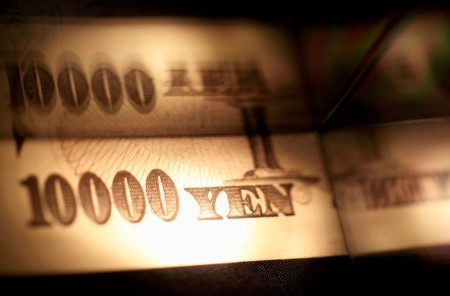




Policy Rate Updates: Double cut finale
 DOWNLOAD
DOWNLOAD

Monthly Economic Update: One for the road
 DOWNLOAD
DOWNLOAD

Inflation Update: Still low, still slow
 DOWNLOAD
DOWNLOAD


Funds slash short yen positions at fastest pace in 4 years: McGeever

ORLANDO – Debate is swirling as to whether Japan’s suspected currency market intervention to support the yen recently has been or will be a success, but if the aim was to target speculative activity, Tokyo may be feeling vindicated.
At least for now.
The latest Commodity Futures Trading Commission data show that hedge funds and speculators slashed their short yen positions by 20% in the week to May 7, the biggest weekly yen-bullish swing since March 2020.
Funds have probably rebuilt some of that short yen position, as the dollar has climbed back up through 155.00 yen. And at an estimated cost of USD 23.6 billion, Tokyo’s intervention in that week came with a price.
But a degree of two-way risk has been injected into the market and CFTC funds may be less willing to take on large bets against the yen at these levels knowing the Ministry of Finance could show its hand again at any point.
The latest CFTC figures show that funds cut their net short yen position by 33,466 contracts in the week through May 7 to 134,922 contracts.
A short position is essentially a bet that an asset will fall in value, and a long position is a wager its price will rise.
In dollar terms, that short yen position is now worth USD 10.9 billion, down from USD 13.3 billion in the week through April 30 and USD 14.5 billion the week before that.
By the end of April, CFTC speculators’ short yen position had grown to the largest since 2007 and the second biggest ever, and the currency had fallen to a 34-year low of 160 per dollar, finally forcing Tokyo to act.
Goldman Sachs FX analysts reckon intervention “should have some lasting impact” on the yen, although the broader macro environment remains quite negative for the currency.
Deutsche Bank’s George Saravelos believes that as long as the Bank of Japan shows no urgency in raising interest rates, that fundamentally negative backdrop for the yen will not change.
Indeed, Deutsche Bank research suggests discretionary hedge funds were strong buyers of dollar/yen on April 29 and May 1, the days Japanese authorities are widely thought to have been selling.
The BOJ appeared to take a hawkish turn at its April policy meeting, a summary of opinions at the meeting showed, putting July and even June in the frame as the potential date for a second rate hike following March’s historic step.
But recent economic indicators have been mixed, consumer spending in March fell for a 13th straight month, and some analysts think BOJ Governor Kazuo Ueda struck a less hawkish tone in a speech last week.
The shift in yen positions in the week to May 7 has led to a wider reduction in CFTC funds’ bullish dollar bets. The total value of their long dollar positions against G10 currencies fell to USD 27.7 billion from USD 32.7 billion the prior week and a five-year high of USD 36.3 billion the week before that.
(The opinions expressed here are those of the author, a columnist for Reuters)
(By Jamie McGeever; Editing by Chris Reese)
This article originally appeared on reuters.com





 By Reuters
By Reuters